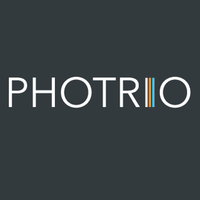Inspired by all the great two part phenidone-ascorbic-acid developers out there, I wondered if it would be possible to modify the formulas for the E-72 paper developer and the FX-55 film developer, so they could use the same universal part B, without compromising on the quality. If possible, one could keep just 3 bottles of stock and simplify the whole mixing procedure. As I learned from reading Mr. Gainer his posts, the amount of ascorbic acid in relation to the phenidone may be adjusted quite freely in part B, without impacting the development properties too much, as long as the ratio is at least 40 to 1 and part A sets the alkalinity of the working solution right. So I came up with the following idea for the universal part B solution:
**** UNIVERSAL PART B ****
H2O (70 C) : 40 ml
Triethanolamine (70 C) : 40 ml
Ascorbic Acid (Vitamin C) : 50 g
Propylene Glycol (70 C) : top up to 100 ml in total
Phenidone : 1 g
Potassium Bromide* : 1 g (Optional. see E-72 part A formula)
* Should slightly increase contrast and prevent blown out highlights.
10 ml of this would provide:
Phenidone : 0.1 g
Ascorbic Acid : 5 g
Potassium Bromide : 0.1 g
TEA : 4 ml
P to C ratio = 1:50.
Alternatively, I might try topping it up to 200 ml with the glycol, in case I have trouble dissolving the other chemicals in a 100 ml of total volume.
**** UNIVERSAL PART B ****
H2O (70 C) : 40 ml
Triethanolamine (70 C) : 40 ml
Ascorbic Acid (Vitamin C) : 50 g
Propylene Glycol (70 C) : top up to 100 ml in total
Phenidone : 1 g
Potassium Bromide* : 1 g (Optional. see E-72 part A formula)
* Should slightly increase contrast and prevent blown out highlights.
10 ml of this would provide:
Phenidone : 0.1 g
Ascorbic Acid : 5 g
Potassium Bromide : 0.1 g
TEA : 4 ml
P to C ratio = 1:50.
Alternatively, I might try topping it up to 200 ml with the glycol, in case I have trouble dissolving the other chemicals in a 100 ml of total volume.
Last edited:











